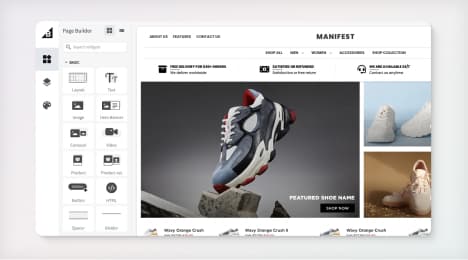
Watch Our Product Tour
See how BigCommerce helps you build and manage your online store with ease.
- Ecommerce Insights

6 Key Steps to Launch Your Online Store
Explore our Launch Foundations series to get your BigCommerce store up and running quickly.
BigCommerce helps growing businesses, enterprise brands, and everything in-between sell more online.
What are social media analytics?
In marketing, everything requires a thorough analysis. To know what’s working and what’s a waste of resources, you’ve got to measure and analyze. There’s just no way around this. Yet, social media is often perceived as the niche where analysis is not feasible. It’s seen as too vague and too subjective.
Social media analytics exists to challenge this belief. Structured or unstructured, the data that social media owns is extensive and priceless. You can find the data on anything on social media, including your market and your audience, and it’s only logical that analyzing this information will improve your decision-making process. So to sum up, social media analytics is the process of gathering and analyzing data from social networks.
How does social media analytics help with understanding your ROI?
Social media analytics tools show the numbers behind the social media reaction to marketing campaigns, new content, product launches, and so on. Increased number of brand or product mentions, likes, retweets, as well as increased number of followers show, in most cases, that the activity has been a successful one. The exceptions are also accounted for: the cases where the activity has attracted negative attention are revealed with sentiment analysis.
Diving into social media data means you don’t just know that the number of mentions, or followers, or likes has increased or decreased. You also know why. You see the most popular complaints or comments, the influencers who’ve praised or criticized your product, the outside factors that played a role, such as location, season, and demographic. For example, you can discover that 80% of negative mentions came from women and you can conclude that the campaign failed due to being offensive to women.
This is how social media analytics is used to assess a particular activity. However, there is also ongoing social media analytics that helps understand why your average ROI is what it is. Ongoing analysis reveals the numbers behind brand awareness, brand reputation, engagement rate and follower growth. Being aware of how much people are talking about your brand on social media (in comparison to your competitors) and what the sentiment behind their conversations is brings you much closer to understanding your results and instantly shows you new ways of improving them. For example, some brands discover that they are unknown on social media, while their competitors create steady buzz. This is a signal to start (or pay more attention to) social media marketing. Or, brands might discover that there are plenty of negative conversations about a particular product or feature or event. Fixing or talking about that negative aspect online might instantly increase the company’s reputation and, consequently, sales.
How does social media analytics help with audience analysis?
Social media analytics is responsible for inspecting your audience on social media. Depending on the tool, you analyze people who follow your brand, or the ones who talk about your brand online, or the ones who follow your competitors, or even just talk about your industry in general. In the end, you simply know more about your target audience. You know the locations they live in, the languages they speak, their demographics, interests, values, average income, and so on. You know which social media platforms they use.
Some of this analytics is done by the social media platforms themselves. For others, you need specific tools. These can be social media monitoring tools, such as Awario, extensive marketing software, such as HubSpot, or social media management tools, such as Hootsuite. Most of their analytics features intersect, revealing you the insights about your audience. As a result, you can improve your marketing campaigns, your product, your customer service ― literally everything that depends on knowing your customer.
How does social media analytics help with market research?
It’s not just your brand’s performance that should be analyzed on social media. Social media analytics includes market research and competitors research. It identifies trending topics in your industry (and overall), finds relevant influencers, reveals content that performs best. It adds to your traditional research methods (surveys, focus groups, interviews) by revealing the opinions that are not influenced by social desirability bias, by the questions asked, or by mistaken recall. Social media users who publish opinions about your niche, your product, or your competitor don’t fill out the survey to get a discount and don’t have to recall the information about your product. They genuinely say what they think ― and this is very important for understanding the market and your product’s place in it.
BigCommerce helps growing businesses, enterprise brands, and everything in-between sell more online.
Start growing your ecommerce business even faster.
High-volume or established business? Request a demo